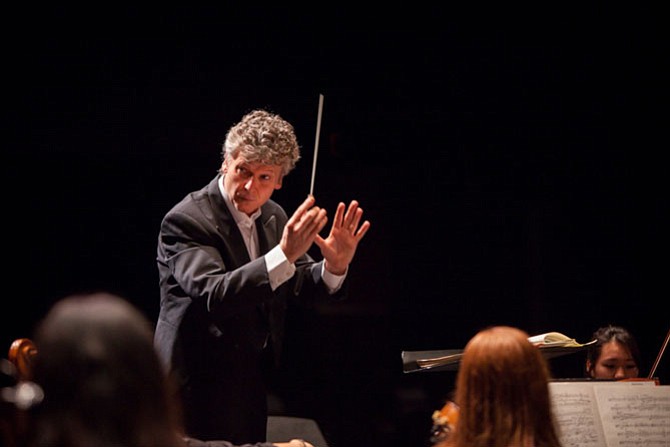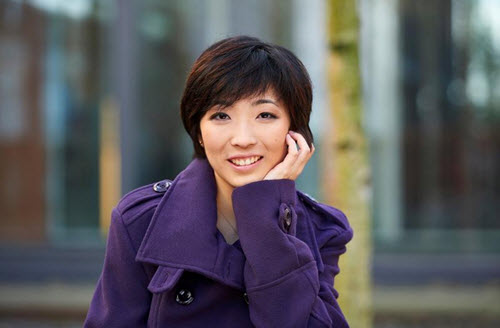Fairfax Symphony brings passion to Russian program

Christopher Zimmerman conducted the Fairfax Symphony Orchestra Saturday night.
At a time when major orchestras are struggling, it’s commendable when a top-notch regional orchestra not only achieves a 60th anniversary but also ratchets up the level of its playing power by pushing its own boundaries.
Based in the Washington DC suburbs, the Fairfax Symphony Orchestra has had a reputation for vibrant and reliable performances that stay well within conventions. But by exploring the depths of restraint and fury in two popular Russian works Saturday evening at George Mason University’s Center for the Arts, the 72-member strong ensemble expanded its sonic extremities, attaining a cutting primordial edge at one end of the spectrum and a seamless sliver of sound at the other.
Under music director Christopher Zimmerman’s baton, the Fairfax Symphony brought warmth and a sense of the long melodic line to Rachmaninoff’s Piano Concerto No. 2, featuring Claire Huangci. Known for her technical prowess, the young pianist showcased her fingerwork with impressive precision and clarity, particularly in the opening of the third movement.

Claire Huangci
But fans who revel in the work’s dark ringing tones and stormy dramatics would have been disappointed in Huangci’s cool interpretation; she generated a smooth patina-like sound out of the Yamaha that was often so understated that listeners had to work hard to hear it through the orchestral accompaniment. The net effect of that pianism meant that phrases sometimes sounded clipped or too nuanced, even when the soloist had the full spotlight. Still, there were sweet moments when the pianist and orchestra landed squarely in tandem – notably the ethereal refrain of the middle movement’s main melody.
If there was a bit of unfettered passion missing from the Rachmaninoff, the Fairfax Symphony more than made up for it in the second half with a searing presentation of Shostakovich’s Symphony No. 5.
Before lifting his baton to conduct, Zimmerman made remarks about the work, highlighting the 1937 symphony’s genesis and the controversial interpretations of its finale ranging from Soviet triumph to oppression of the people.
Taking their director’s words to heart, the Fairfax musicians played ardently, infusing the four movements with such emotion and tension that the conductor literally gripped the handrail behind him on several occasions.
From the opening movement, where the hopeful string and bucolic wind melodies gave way to a strident march and unsettling sonorities, to the stately but inevitable finale, the orchestra stayed energetic and responsive, highlighting the symphony’s duality as it carried out the conductor’s grand vision.
While the Allegretto sounded delightfully brusque and almost giddy, it was the introspective Largo movement that proved the highlight with its organ-like sonority and soulful aching quality.
